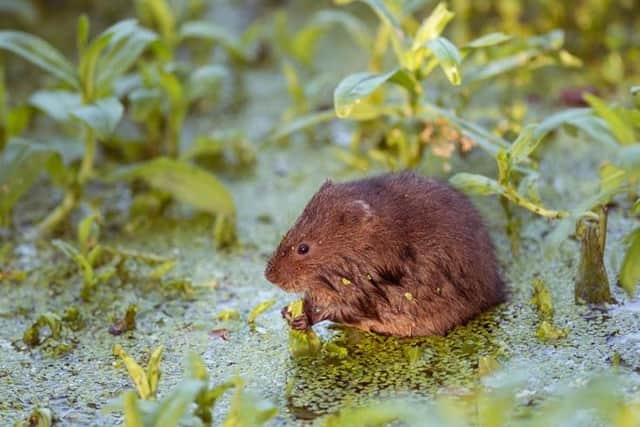Water voles: Volunteers wanted to count endangered species in Hampshire
and live on Freeview channel 276
Water voles, which are one of Britain’s fastest declining animals, and are on the ‘Endangered on the Red List for Britain’s Mammals’, live near waterways, and an appeal for volunteers in
Hampshire has been issued.


The survey runs until June 15, and is run by the wildlife charity People’s Trust for Endangered Species (PTES). It is part of the National Water Vole Monitoring Programme, which was formed in 2015 to tackle the dwindling
water vole population.
Advertisement
Hide AdAdvertisement
Hide AdPTES’s water vole officer Emily Sabin confirmed that ‘no experience is needed’ to take part, and that online training will be provided.
She added that volunteers should find their nearest waterway to look out for water voles, or signs of their presence, including their characteristic ‘plop’ as they drop into the water, footprints, burrows, and droppings.
Emily said: ‘Water voles live in rivers, canals, ditches, streams and ponds. They prefer slow flowing water with gently sloping earth banks in which they build a network of burrows. They love areas of lush vegetation and reedbeds.’
The Meon Valley saw the reintroduction of 2,500 water voles in 2013, and Emily named sites such as St Clair’s Meadow near Soberton, Upper Titchfield Haven near Fareham, and stretches of the River Meon and its tributaries as possible sites to conduct the survey.
Advertisement
Hide AdAdvertisement
Hide AdEmily added that water voles have suffered from ‘dramatic decline due to habitat loss, water pollution, urban expansion and predation from the non-native American mink’ since the 1950s.
Today, only small pockets remain along waterways in the county.
Last year, 216 sites were surveyed across the UK for potential water vole populations, with 85 of these returning sightings.
In addition, Emily said that water voles are ‘ecosystem engineers’, and that they make use of their hungry and herbivorous nature to influence the environment around them, namely by “controlling the growth of dominating plants, dispersing wildflower seeds, improving soil quality and and creating healthy habitats for other animals’.
The survey would take around an hour, with volunteers ideally walking 500 metres along a waterway looking for water voles and signs of them on that specific stretch. Volunteers can partake in the survey at any time of the day, but should ensure that they do this on a dry day and not within 48 hours of rainfall, due to the rain potentially washing away signs of water voles.
To sign up for the survey, and to access online training, free online Zoom talks, and to record findings, head to www.ptes.org/watervoles